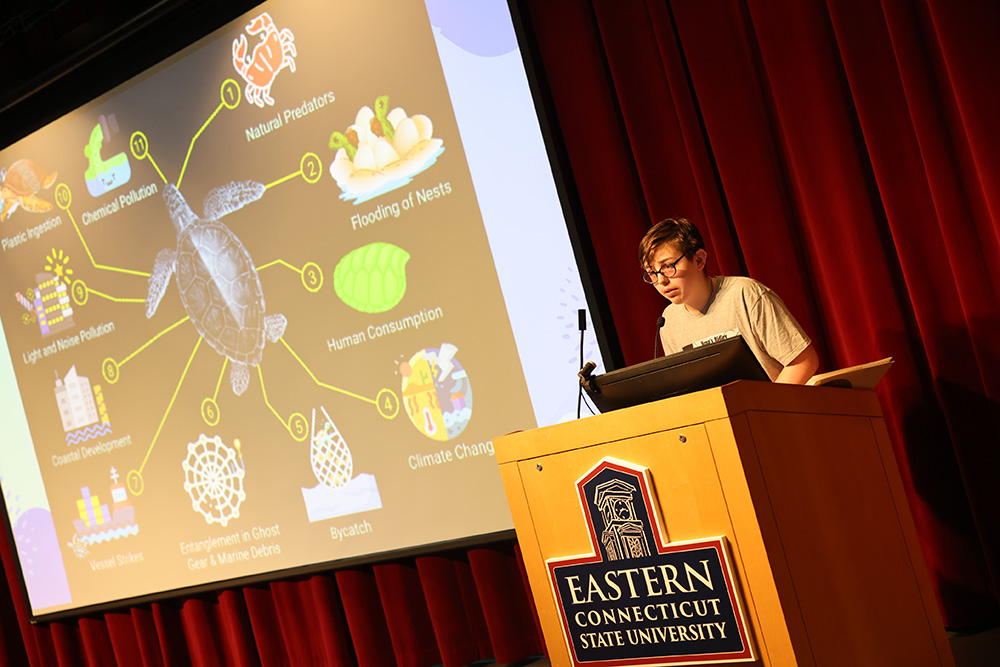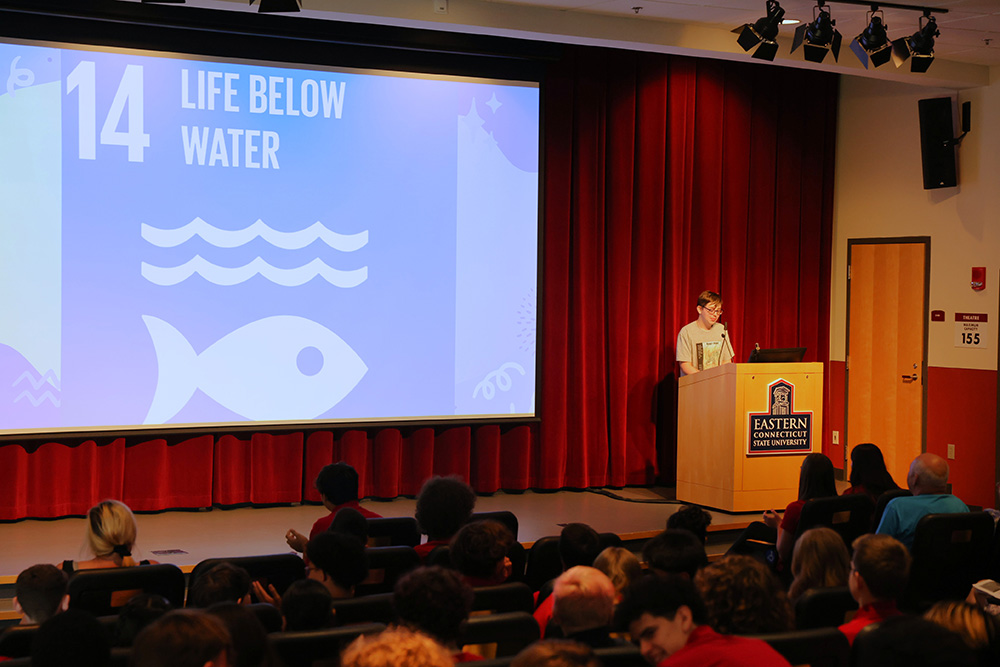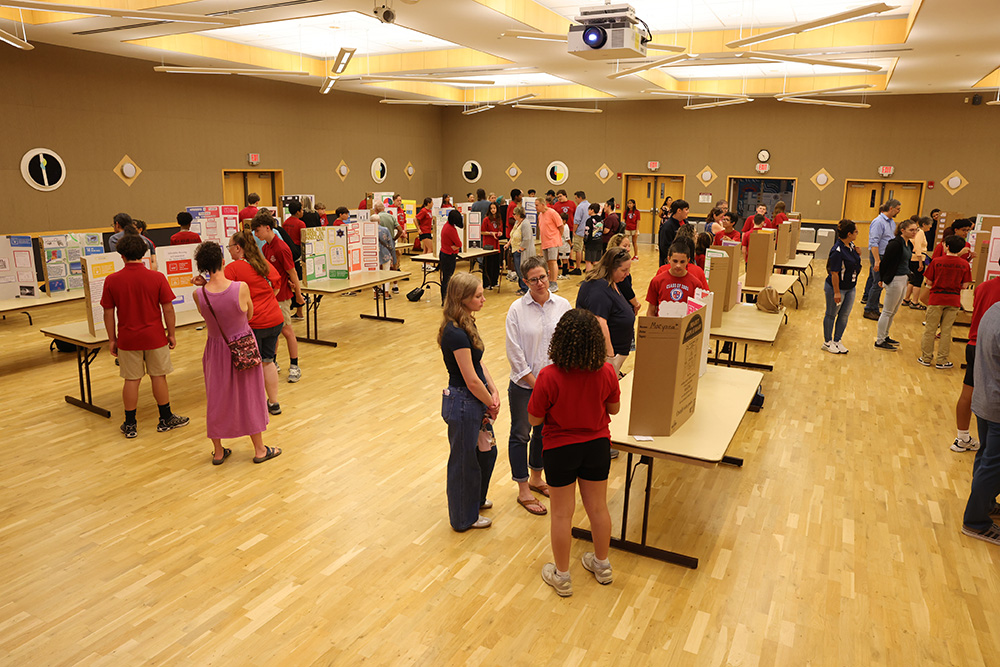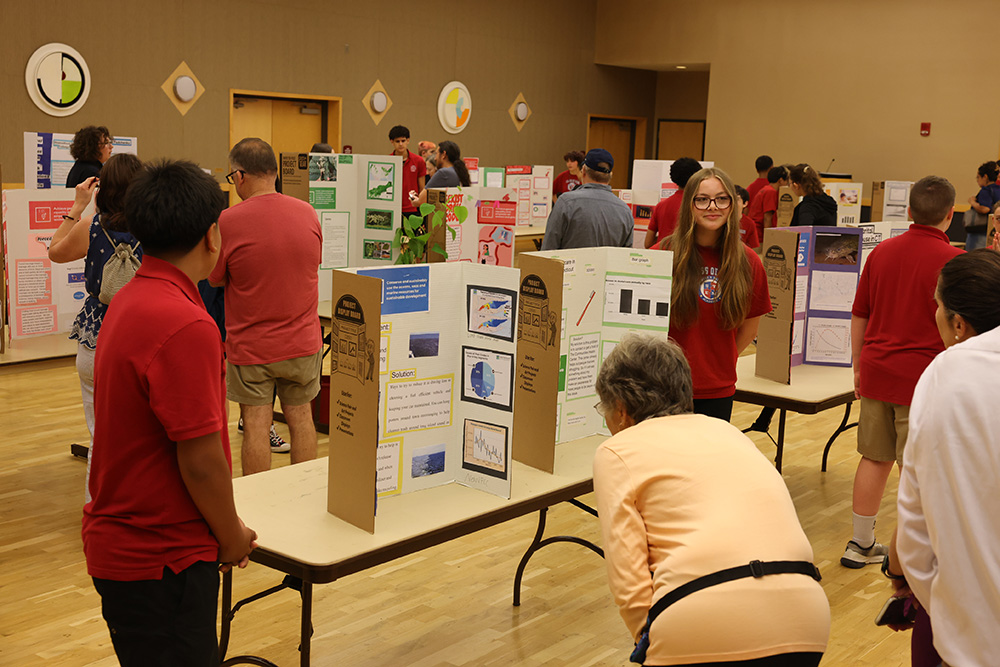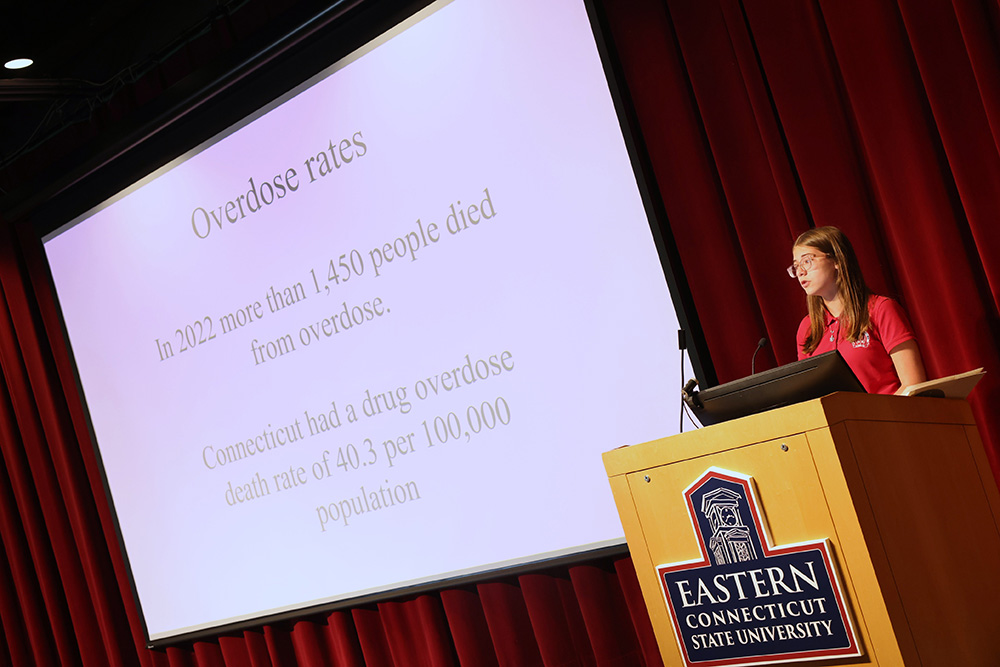- Apply
- Visit
- Request Info
- Give
Barrows STEM Academy students present sustainability research at Eastern
Students focus on sustainable development in Puerto Rico
Written by Elisabeth Craig
Published on June 18, 2025
More than 60 eighth-graders from Charles H. Barrows STEM Academy presented their capstone research projects at Eastern Connecticut State University on June 6. The event was held in the Student Center with presenters covering a plethora of sustainability challenges and controversies through poster sessions and oral presentations.
According to Barrows teacher Christian B. Kolleger, each issue that the students selected was in line with the United Nations Sustainable Development Goals (UNSDG) and covered topics such as socioeconomic challenges and environmental awareness to later turn into a final essay.
“It was ideal to base our capstone work on them as they are broad and include a lot of opportunities for different types of investigation and problem solving, which are skills that we really prioritize our students having,” said Kolleger.
“Students explore the UNSDG then pick a specific area of concern that resonates with them," he continued, "and then they spend time researching to understand the problem as fully as they can.”
Kolleger explained that part of the assignment was to study issues close to home, this year expanding the learning territory to Puerto Rico since some students have family there. Students focused on a variety of issues affecting the territory.
“Notable projects included the failing electrical grid of the island, homelessness, endangered amphibians, and the iguaca parrot (Puerto Rican amazon, a species of bird),” said Kolleger.
He continued: “Other outstanding projects this year focused on the Kemp's Ridley turtle, suicide, substance abuse (the fentanyl epidemic), poaching, and internalized misogyny. The students were highlighted in visual presentations in the Student Center Theater.”
Patty Szczys, biology professor and executive director of sustainability, explained that the school’s collaboration with Barrows STEM Academy was fitting given Eastern’s 25-year commitment to community outreach.
“Each year I come away from these presentations having learned something new, and having the chance to interact with these young people renews my confidence for our shared future,” said Szczys. “I was impressed to see these students using critical thinking and problem-solving skills when proposing solutions to society's most pressing issues.”



